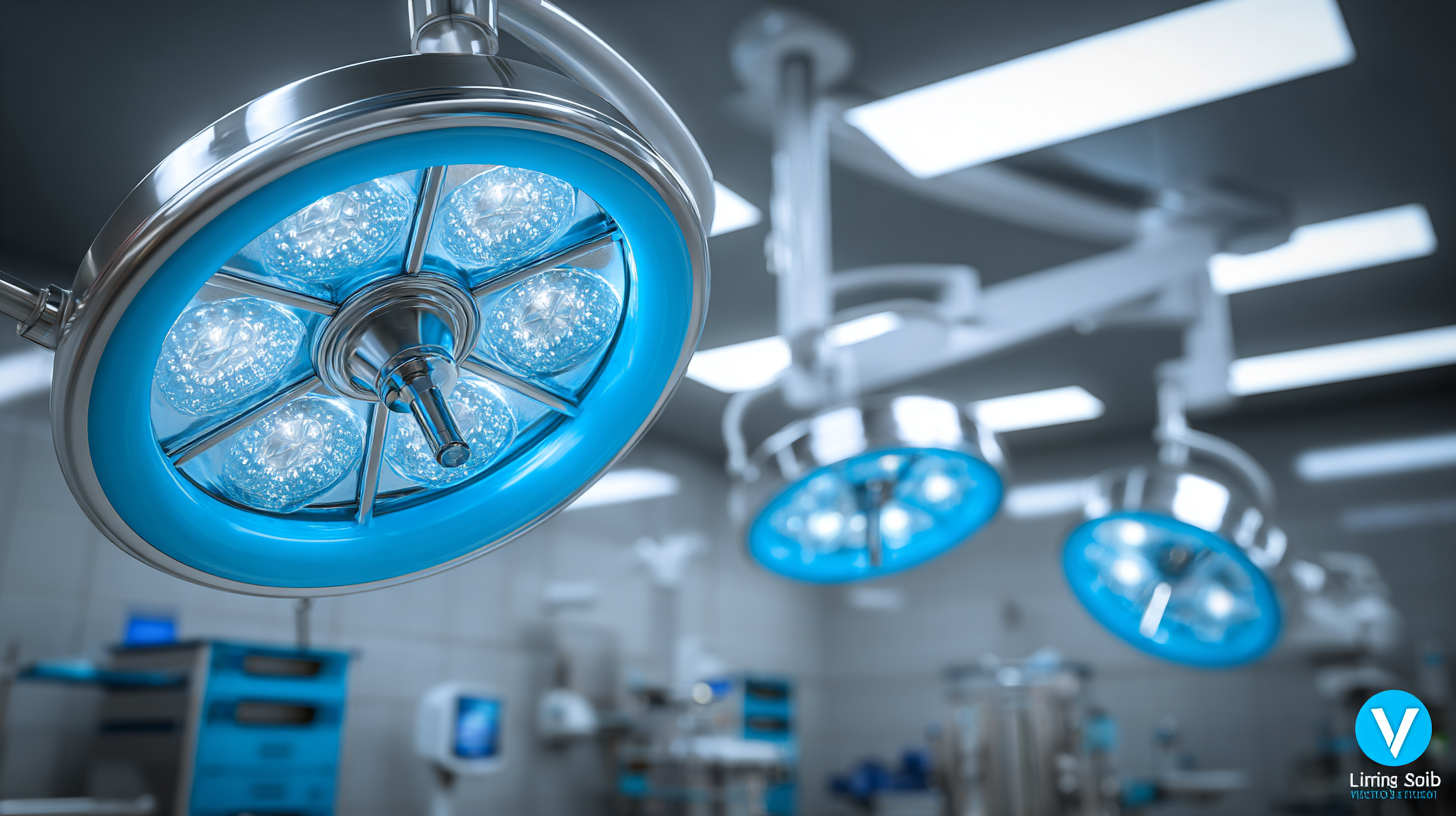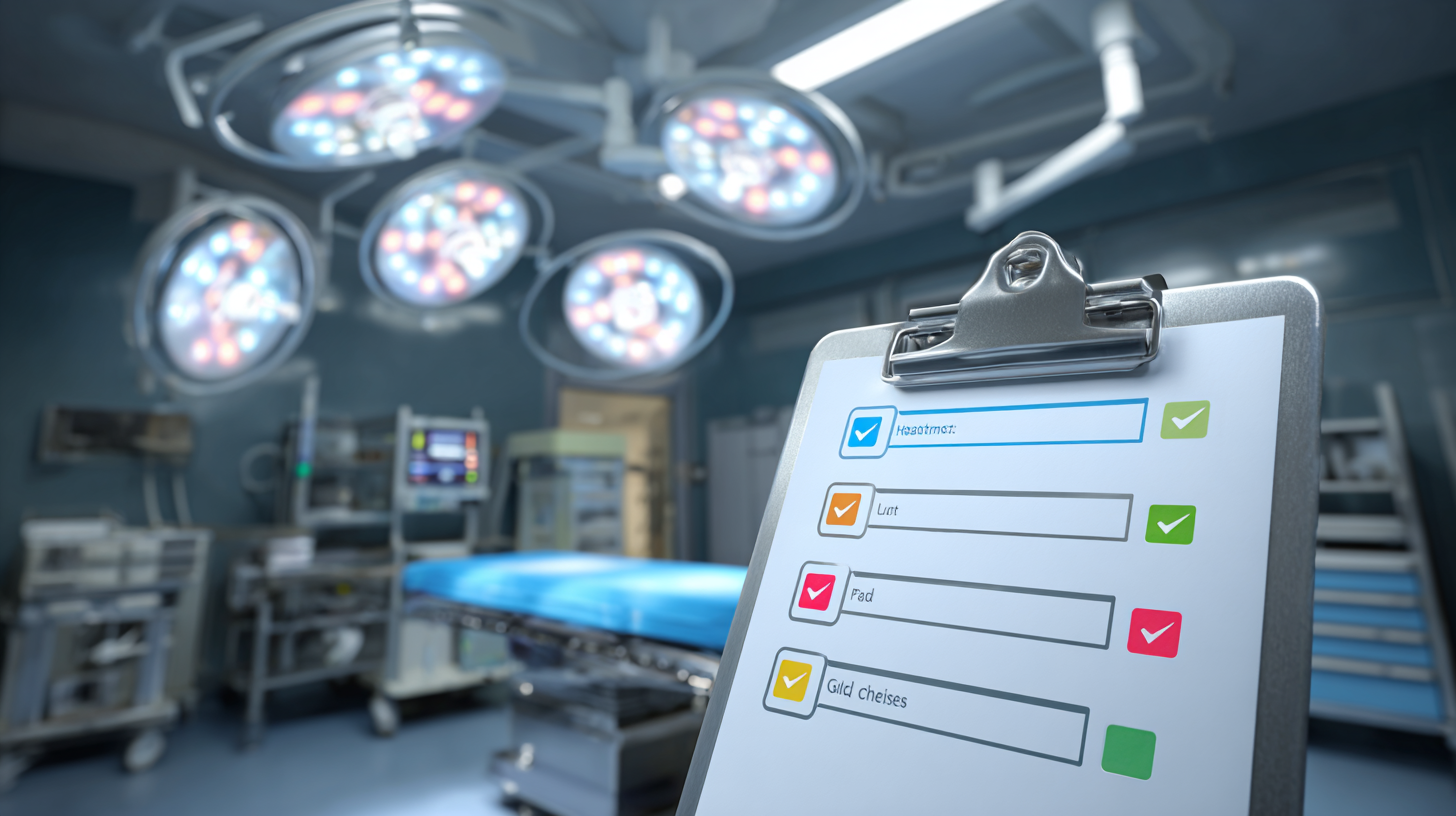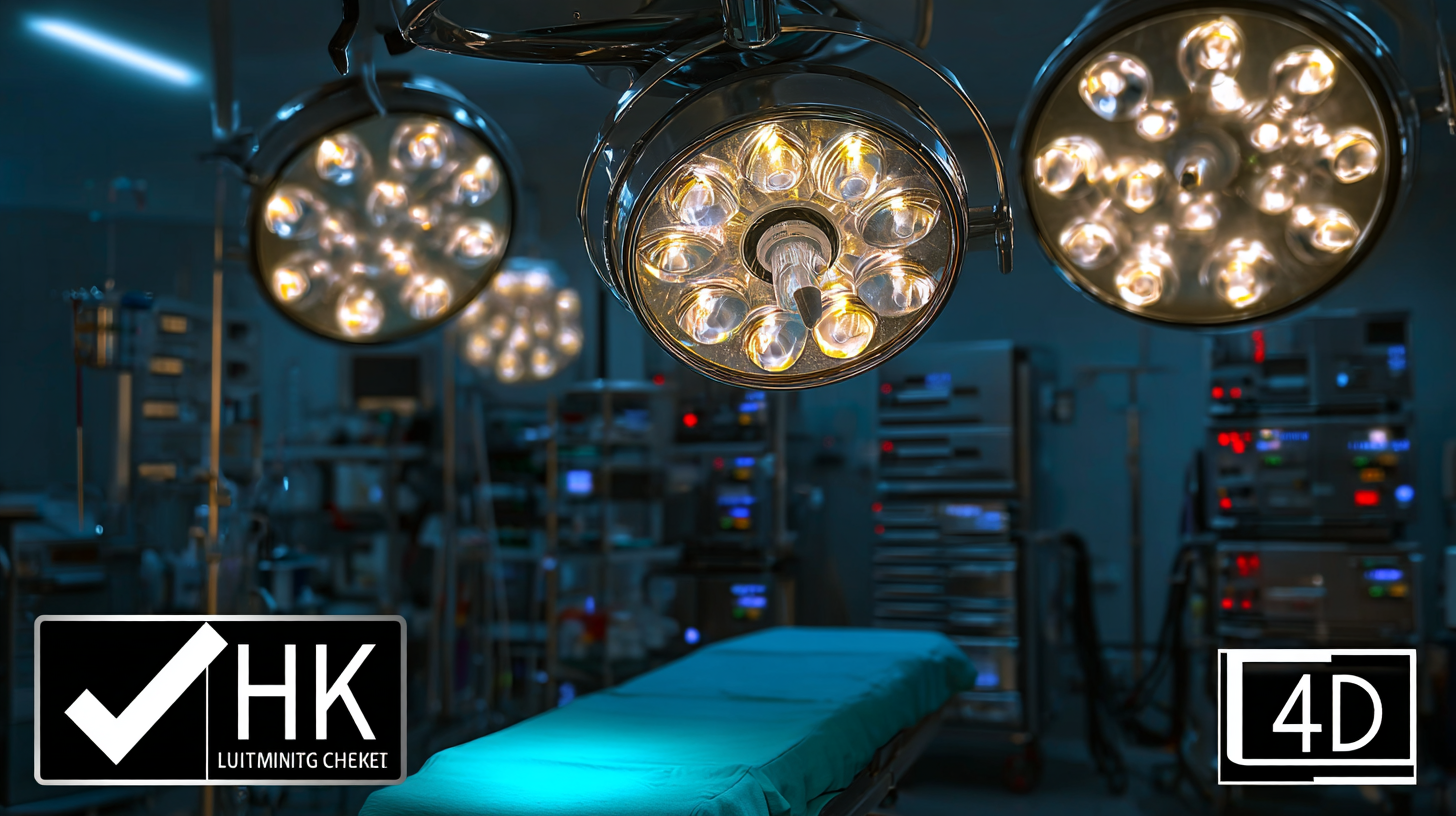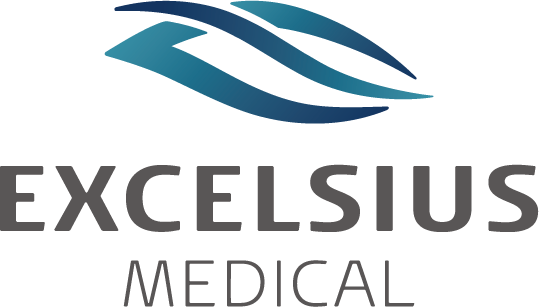Ultimate Checklist for Choosing the Best Lighting Medical Solutions
Selecting the right lighting medical solutions is crucial for healthcare facilities, as the right type of lighting can significantly influence patient outcomes and staff efficiency. With a myriad of lighting options available, including LED lights, surgical lights, and examination lights, understanding the unique features and specifications of each product becomes paramount. This blog aims to provide an ultimate checklist for healthcare professionals to navigate the complexities of lighting medical solutions. By examining the benefits and appropriate applications of different lighting types, we will equip you with essential knowledge to make informed decisions that enhance both clinical environments and patient experiences. Proper lighting not only illuminates spaces but also creates a healing atmosphere conducive to recovery and operational excellence.

Key Factors to Consider When Choosing Medical Lighting Solutions
When selecting medical lighting solutions, one of the most critical factors to consider is the type of procedure for which the lighting will be used. Different medical environments, such as operating rooms, examination rooms, and dental offices, have unique lighting requirements. For surgical settings, focused and bright lighting is essential to illuminate the surgical field without shadows, allowing for precision and safety. In contrast, examination rooms may benefit from softer, adjustable lighting to create a more comfortable atmosphere for patients while still maintaining adequate visibility for healthcare providers.
Another key consideration is the color temperature of the lighting. Medical professionals often prefer cool white light, which helps with visibility and maintaining color accuracy during procedures. However, it is also important to incorporate adjustable lighting systems that offer warm light options for patient comfort. Additionally, energy efficiency and durability should not be overlooked. Investing in LED lighting solutions can reduce energy consumption and provide longer lifespans, ultimately saving costs and minimizing maintenance. With these factors in mind, healthcare facilities can enhance both patient experience and operational efficiency through optimal lighting choices.
Ultimate Checklist for Choosing the Best Lighting Medical Solutions
| Criteria | Importance Level | Recommended Features | Typical Costs Range |
|---|---|---|---|
| Brightness (Lumens) | High | Adjustable brightness levels | $100 - $500 |
| Color Temperature (Kelvin) | Medium | Ability to switch between warm and cool light | $150 - $600 |
| Energy Efficiency | High | LED options and low energy consumption | $120 - $700 |
| Adjustability | Medium | Flexible arms or mounts | $80 - $400 |
| Durability | High | Shock-resistant and easy-to-clean materials | $200 - $800 |
| Certification and Compliance | High | Meets medical standards | N/A |
Types of Medical Lighting: Understanding Your Options
When it comes to medical lighting, understanding your options is crucial for creating an effective, safe, and comfortable environment for both patients and healthcare professionals. There are several types of medical lighting to consider, each serving distinct purposes and functionalities.
One of the primary types is surgical lighting, designed to provide bright, precise illumination during procedures. These lights help minimize shadows and can often be adjusted based on the specific needs of the surgical team.
Another important category is examination lighting, which offers softer, more diffused light ideal for clinical assessments. These lights are essential in a doctor's office or examination room to ensure accurate evaluations.
Tips for selecting the right medical lighting include evaluating the color temperature of the lights, as this can affect visibility and fatigue levels. Additionally, considering the adjustability of the lighting system can enhance its usability across various procedures and settings. Lastly, don't overlook the importance of energy efficiency; modern LED options are not only long-lasting but can also reduce operational costs.
Essential Features of Quality Medical Lighting Equipment
When selecting quality medical lighting equipment, several essential features must be prioritized to ensure optimal performance and patient safety. A report by the Global Market Insights indicates that the medical lighting market is expected to grow at a CAGR of 5.6% from 2020 to 2026, underscoring the increasing demand for innovative lighting solutions in healthcare. Key features include color rendering index (CRI), which should ideally be above 90 to accurately reproduce colors in clinical settings. This is vital for surgeons and healthcare professionals to make informed decisions during procedures.

Another critical aspect is the flexibility of lighting solutions. According to the Journal of Surgical Research, adjustable lighting systems reduce the incidence of shadows and enhance visibility during surgeries. Furthermore, the integration of LED technology has revolutionized medical lighting, offering energy efficiency and lower heat output, which contributes to a safer working environment. As hospitals continue to prioritize the well-being of patients and staff, investing in high-quality lighting solutions equipped with these essential features is imperative for improving outcomes in medical practice.
Regulatory Standards and Compliance for Medical Lighting
When selecting lighting solutions for medical environments, compliance with regulatory standards becomes paramount. The ever-evolving landscape of healthcare regulations requires manufacturers and healthcare providers to stay vigilant. Recent updates indicate that the HHS' Office for Civil Rights is prepared to roll out new compliance requirements, emphasizing the need for stringent adherence to legal frameworks. For instance, the integration of e-signatures in healthcare practices must ensure protection of patient health information (PHI) under HIPAA, showcasing that compliance isn't just a checkbox but a critical component of patient trust and safety.
Moreover, global insights underline the complexity of regulatory affairs affecting medical devices and lighting solutions. A recent report highlights that varying regulations across different jurisdictions add layers of difficulty for manufacturers seeking to enter new markets. For example, the China State Administration for Market Regulation has released a draft compliance guide for healthcare companies, reflecting the global trend toward stricter oversight and accountability. This evolving regulatory terrain demands thorough understanding and proactive measures to ensure that medical lighting solutions not only meet safety and performance standards but also contribute positively to patient care outcomes.
Maintenance and Support: Ensuring Longevity of Lighting Solutions
When investing in lighting medical solutions, maintenance and support are critical factors that contribute to the longevity and performance of the equipment. Regular maintenance ensures that the lighting systems operate at their optimal levels, providing consistent visibility essential for medical procedures. Scheduled inspections help identify potential issues before they escalate, which can save healthcare facilities time and costly repairs. Additionally, a thorough maintenance plan should include cleaning procedures, replacing bulbs, and checking electrical components to prevent unexpected downtime.

Support services are equally important in safeguarding the investment in medical lighting. It's crucial to partner with a manufacturer or supplier who offers robust customer support, including troubleshooting assistance and quick access to replacement parts. Training for healthcare staff on proper usage and maintenance can also enhance the lifespan of the lighting systems. By prioritizing maintenance and support, healthcare organizations can ensure that their lighting solutions remain efficient and effective, ultimately improving patient care outcomes and maintaining a safe working environment for medical professionals.
© 2025 EXCELSIUS MEDICAL All rights reserved
EXCELSIUS MEDICAL
Taiwan Office
2F., No. 18, Ln.31, Sec.1, Huandong Rd.,
Xinshi Dist., Tainan City 744, Taiwan, R.O.C.
German Office
Zeppelinstr. 4, Haus 3&4,
D-85399 Hallbergmoos, Germany
